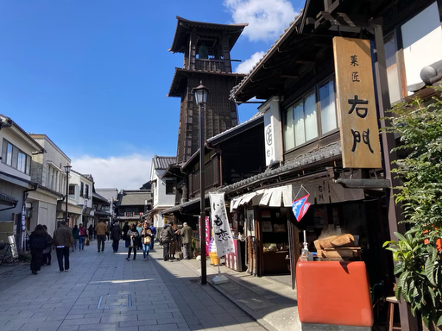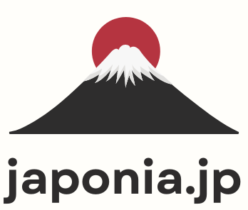We are a registered Land Operator “Travel Service Arranger”.
We would be grateful to assist you in any way possible regarding travel services to Japan.
Please tell us about the travel needs to Japan that your customers have inquired about to your company.
We would like to give you some ideas on how we can help you and collaborate with you.
If you are interested, please contact us.
About accommodation base for sightseeing in Japan.
Kawagoe in Saitama Prefecture is close to Tokyo and is a great base for sightseeing in Japan.
When you come to Japan for sightseeing, where is the first hotel to stay?
If it is a normal idea, it will be a hotel in Tokyo.
After arriving at Narita Airport or Haneda Airport, many travelers head directly to a hotel in Tokyo.
There are many benefits to staying at a hotel in Tokyo.
1. First of all, access is good when traveling by train from the airport.
2. There are many hotels in Tokyo, so there are many options to choose from.
3. Tokyo has famous tourist spots such as Tokyo Tower, Asakusa, Imperial Palace, and Shibuya.
There are also many delicious izakayas(Japanese style tavern) and cafes.
Then, are there only good things if you choose a hotel in Tokyo?
To gain new perspectives,consider reasons why you might not need to stay in Tokyo.
1. Tokyo is the capital and there are many people, including foreign tourists, so hotel rates are expensive.
2.If this is your second visit to Japan, you have already visited tourist spots in Tokyo.
In that case, there may be no particular merit for you to stay in Tokyo.
3. There is a high possibility that you will be caught in a traffic jam when you go to other sightseeing spots from Tokyo.
I have guided customers to Mt. Fuji many times using my own taxi.
At that time, we got caught up in serious traffic jams many times.
I and customers often experienced that we left the hotel at 7:30 and arrived at Lake Kawaguchi near Mt.Fuji after 11:00.
Also, the traffic on the way back to the hotel in Tokyo was terrible.
Therefore, I would like you to think about finding a place to stay outside of Tokyo after arriving at the airport.
I would like to recommend “Kawagoe” in Saitama Prefecture.

It will take about 70 minutes by taxi from Narita Airport to downtown Tokyo using the expressway.
On the other hand, it takes about 110 minutes to Kawagoe.
As a result, the taxi fare will be higher.
That point is a disadvantage if you choose “Kawagoe” as your accommodation base.
However, there are also big advantages.
1. First of all, when you go to Mt.Fuji or Kusatsu from Saitama, you won’t get caught in traffic jams in Tokyo.
I think this is a very big point.
Based on my experience, you can save 70-90 minutes each way to your destination when driving to Mt.Fuji. If it’s a round trip, you won’t get stuck in traffic, so you can save two and a half hours on your trip.
Even going to Kusatsu, a famous hot spring resort, you can save 60 minutes one way compared to going from a hotel in Tokyo.
2. In addition, the town of Kawagoe itself is a nice tourist attraction.
Kawagoe has a traditional townscape known as Koedo (little Edo) and is home to many shops selling traditional Japanese food and desserts.
Please search for “Kawagoe” on Google.
3. And compared to the price of hotel in Tokyo, hotel rates in Kawagoe are low.
4. To go to Tokyo by train, for example, it takes 49 minutes by “Tobu Tojo Line” from Kawagoe Station to Shibuya Station, and the fare is 630 yen. And, it takes 41 minutes to get to Shinjuku Station from Kawagoe including changing trains. Access from Kawagoe to Tokyo by train is also good.
To stay in Kawagoe is a good choice for those traveling to Japan who want to visit Mt. Fuji and hot spring areas such as Kusatsu.

In addition, there is “Chichibu” near Kawagoe. It would be interesting to search for sightseeing spots in “Chichibu” on Google.
There are also “Railway Museum” and “Bonsai Museum” in “Omiya” city.
And there are more than 30 sake breweries in Saitama Prefecture, where Kawagoe is located.
If you like Japanese sake, it might be a good idea to visit a sake brewery.
In addition, Saitama Prefecture has many “sacred place of anime” where appeared in anime.

If you choose Kawagoe as your base for your stay in Japan, you can save a lot of time compared to traveling from Tokyo to Saitama’s tourist spots and Gunma’s hot spring resorts.
If you are interested in a transfer from the airport to Kawagoe, a trip from Kawagoe to Mt. Fuji, or a trip from Kawagoe to Kusatsu Onsen Resort, please feel free to contact me.
Tourist guide service
We can help guide tourists up to 5 adults (and 1 child).
Vehicle type, passenger capacity and loadable capacity.
1. Toyota Vellfire → 1 to 5 people if travelers are not carrying suitcases. However, if travelers have suitcases, the limit is 3 people, and 3 suitcases can be carried.
2. Toyota Hiace → 1 to 5 people. It is possible to load 5 suitcases for travelers.
*If there are 4 to 5 travelers with suitcases, we recommend the Hiace, but if there are no suitcases, we recommend the Vellfire.
Please feel free to contact us.
*Please check out the images of the vehicles at the end of this site.
Usage example: 5 adults
① Narita Airport → Kawagoe sightseeing (using Toyota Hiace, with suitcases)
② Kawagoe ⇄ Mt. Fuji sightseeing (using Toyota Vellfire, no suitcases)
③ Kawagoe ⇄ Ikaho Onsen sightseeing (using Toyota Vellfire, no suitcases)
④ Kawagoe → Hakone sightseeing (using Toyota Hiace, with suitcases)
Recommended sightseeing courses based in Kawagoe
(*Itineraries can also be planned from hotels in Tokyo or Narita Airport.
In that case, the vehicle will be Vellfire only. Please feel free to contact us.)
Narita Airport → Kawagoe
Kawagoe ⇄ Mt. Fuji
Kawagoe ⇄ Tokyo Sightseeing
Kawagoe ⇄ Kusatsu Onsen
Kawagoe ⇄ Ikaho Onsen
Kawagoe → Mt. Fuji and Hakone (travelers will stay overnight in Hakone)
Kawagoe ⇄ Railway Museum, Bonsai Museum, Kadokawa Musashino Museum, etc.
Kawagoe → Other tourist destinations
Itineraries such as the one below are also possible:
Kawagoe → Nozawa Onsen, Jigokudani Monkey Onsen
(However, Nozawa Onsen is located in a remote area in the mountains of Nagano Prefecture.
Therefore, it is not possible to plan a day trip.
Travellers will need to stay overnight in Nozawa Onsen.)

Rescheduling your Mt. Fuji sightseeing trip in case of rain
The weather on the day is very important to make Mt. Fuji sightseeing a satisfying trip.
Unfortunately, if the weather is rainy, Mt. Fuji cannot be seen at all.
Therefore, sightseeing at Mt. Fuji is not recommended.
If rain is expected on the day of sightseeing at Mt. Fuji, you can change your destination from Mt. Fuji to Ikaho Onsen if you wish.
At Ikaho Onsen, you can enjoy the atmosphere of a traditional Japanese hot spring town and take a dip in exotic natural hot springs.
You can also choose Kusatsu Onsen instead of Ikaho Onsen.
In that case, an additional fee will be charged.
Recommendation No.1: A 2-day course that includes sightseeing in Tokyo and Mt. Fuji, or a 2-day course that includes sightseeing in Mt. Fuji and Ikaho
This two-day tour allows you to visit Mt. Fuji on a clear day.
For example, if the weather forecast predicts cloudy on the first day and sunny on the second, you can use the first day to visit Tokyo and the second day to visit Mt. Fuji.
Also, if the first day is sunny and the second day is rainy, you can visit Mt. Fuji on the first day and Tokyo on the second day.
It is also possible to plan an itinerary that includes a visit to Ikaho Onsen instead of Tokyo.
In that case, the tour price will vary depending on the course.

Recommendation No.2: A two-day trip to Mt. Fuji and Hakone, staying overnight in Hakone
You can visit Mt. Fuji on a nice day during the two-day tour.
For example, if the weather forecast says it will be cloudy on the first day and sunny on the second day, you can visit Hakone on the first day, where you can enjoy various attractions even on cloudy weather, and enjoy the beautiful view of Mt. Fuji on the second day.
Also, if the first day is sunny and the second day is rainy, you can visit Mt. Fuji on the first day and Hakone on the second day.

Items to confirm at the time of contract.
*The itinerary may change due to weather or traffic conditions.
*The itinerary may change if an unexpected accident occurs.
*The tour may be canceled due to the driver-guide’s physical condition or unforeseen circumstances.
(However, there have been no cases of the itinerary being canceled due to the driver-guide’s physical condition.)
*If the tour is cancelled due to unforeseen circumstances involving the driver-guide, the tour fee will be fully refunded.
*If the tour is terminated midway due to an unforeseen accident or other reason, the driver-guide will make efforts arrangements for participants to return to the departure point. In that case, the tour fee will be refunded according to the tour’s implementation status.
The Japanese driver guide can speak basic Polish and Russian, including daily conversation, in addition to English.
There are pictures of the vehicles we will be using, so please check them out.
Introducing the Toyota Vellfire vehicle.
Introducing the Toyota Hiace vehicle.
Certified Travel License:
Travel service arrangement business : No. 148 ( registered by the Governor of Saitama Prefecture )
we will arrange guides as the travel service arranger.
Features of the guide service that the arranged guide performs locally according to the traveler’s wishes
⒈ Provision of travel care technology related to the use of wheelchairs
⒉ Local information service in a foreign language (e.g., Polish or English)
⒊ Guide using hot spring knowledge and qualifications
⒋ Support for continuing travel to the extent that self-medication can be handled
⒌ Japanese instruction by a qualified Japanese teacher during the tour
Certifications held by guides relevant to each category.
1. ホームヘルパー2級、移動支援従業者、同行援護従業者(一般、応用)
2. 総合旅行業務取扱管理者、国内旅程管理主任者、東京シティガイド、東京地理試験
3. 温泉入浴指導員、温泉観光士
4. 登録販売者、患者等搬送乗務員
5. 大学における日本語教員養成課程修了
※ The guide service is charged according to the customer’s personal itinerary and service.
※ The guide fee is charged depending on the itinerary and service, but in transportation to the destination, you will receive actual expenses such as gasoline, toll road fees, parking fees, etc.
※ The guide will transport the customer by private vehicle that does not require permission or registration under the Road Transport Act, and will guide the tourist.
